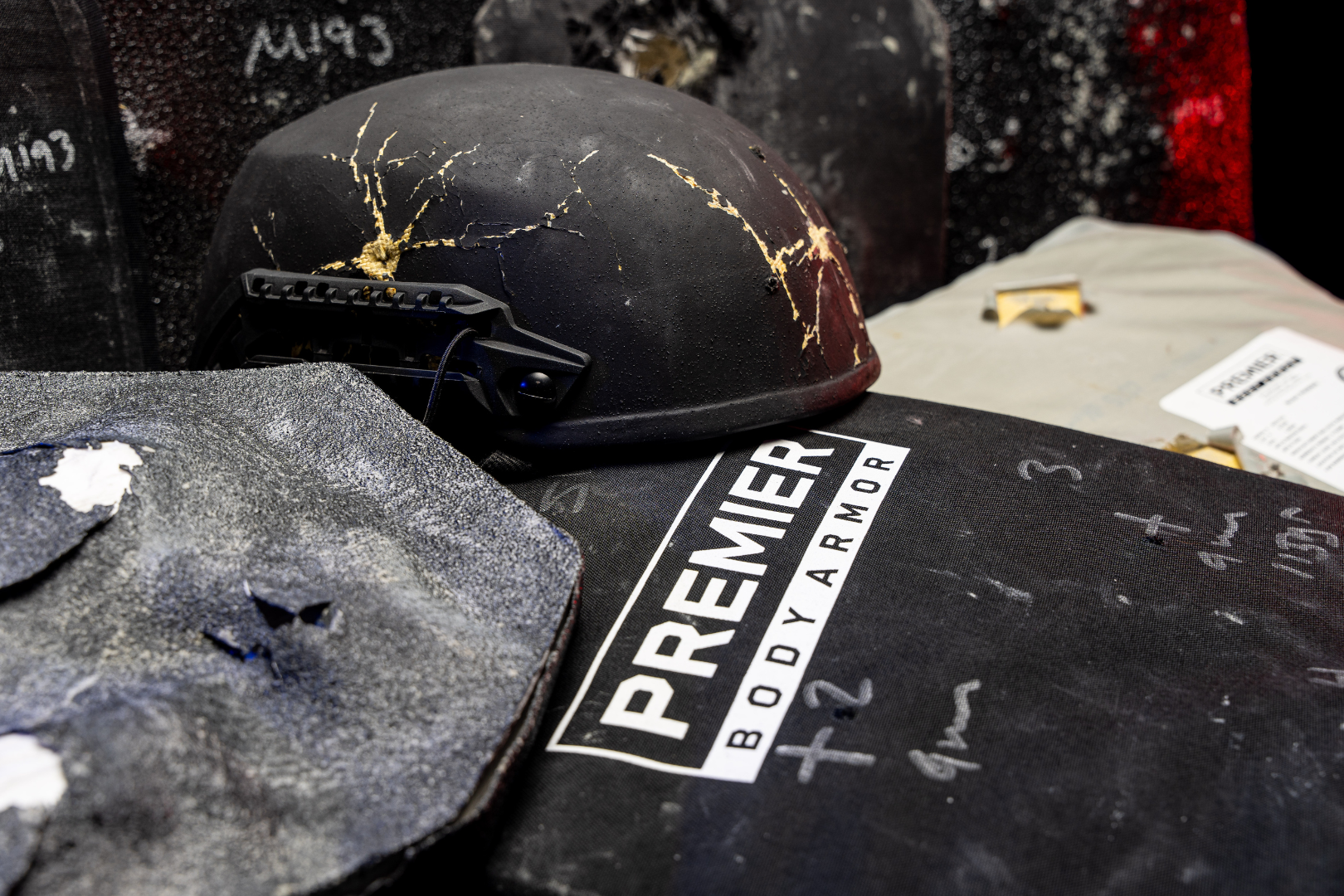How is Body Armor Tested?
Body armor plays a crucial role in protecting the lives of law enforcement officers and military personnel in high-risk environments, as well as for everyday people in their everyday lives. But whether or not the armor can do its job of keeping you safe is dependent on one thing: rigorous testing procedures.

In this article, we will explore the fascinating world of body armor certification, delving into the various methods used to ensure its quality and performance. From range testing to water submersion to tumble drying, we will uncover the intricate steps involved in certifying body armor's ability to save lives.
NIJ Testing Overview:
To begin, let's review the National Institute of Justice (NIJ) standards, which classify body armor into different levels based on their resistance to ballistic threats. These range from level IIA (least protection), level III, level IIIA, and level IV (highest level of protection).
Understanding these levels is crucial to comprehend the testing protocols for each type of armor. For more information on how the NIJ certifies armor, read our blog Understanding the Ratings.
Test Samples:
When body armor manufacturers seek certification, they must submit multiple samples of their products to undergo comprehensive testing. The testing process involves evaluating soft and hard armor both. 
Range Testing:
The range testing phase of body armor evaluation is one of the most riveting aspects of the certification process. It involves subjecting the armor to a barrage of bullets to assess its resilience and protective capabilities.
Various types of ammunition, meticulously selected based on the armor's specific level, are lined up, ready to unleash their force upon the test subjects. The ammunition chosen for soft armor might differ from that used on hard armor, as the two have distinct strengths and weaknesses against different threats.
The exact number of shots varies depending on the specific armor level they are testing. For example, Level IIIA soft armor may be subjected to multiple shots from different calibers and at various distances, typically ranging from 9mm to .44 Magnum rounds. In comparison, Level III and Level IV hard armor may face multiple rounds of rifle ammunition to demonstrate their ability to protect against high-velocity threats.

The range testing assesses the armor's ability to stop a variety of projectiles, including bullets of different calibers and speeds. Each shot fired paints a vivid picture of the armor's performance and its capacity to save lives in the most dangerous situations.
Then, the testers closely examine the armor samples after each round of firing, assessing the impact of the ammunition and inspecting for any signs of penetration or damage. The armor's stopping power is scrutinized, as even the slightest lapse in protection can have dire consequences for the wearer.
Throughout this rigorous testing process, each armor sample is pushed to its limits, facing wave after wave of ammunition to prove its mettle. The results of these tests are pivotal in determining whether the armor meets the NIJ standards and, consequently, whether it will receive the coveted certification.
Backface Deformation:
While body armor may successfully stop a bullet, it is essential to consider the effects of blunt force trauma on the wearer. Backface deformation refers to the indentation created on the opposite side of the armor upon impact.

Excessive backface deformation can cause serious injury. Manufacturers must ensure that their armor minimizes backface deformation to an acceptable level, protecting the wearer from potential harm. Check out our comprehensive article on backface deformation.
Water Submersion:
Body armor is subjected to water submersion tests to assess its durability and performance in wet environments. This test involves immersing the armor samples in water for a specified duration. Afterward, the armor is thoroughly inspected for any signs of degradation or reduced ballistic capabilities.

Ensuring that body armor maintains its protective qualities when exposed to water is vital, particularly for professionals operating in maritime or rainy environments.
Conditioning:
The conditioning phase of body armor testing is a crucial and fascinating aspect of the certification process. During this rigorous stage, armor samples are put through a battery of challenges to simulate the wear and tear they may encounter during their service life.
In the conditioning phase, armor samples find themselves in the heart of a large industrial dryer. This unassuming yet key appliance mirrors the effects of continuous wear, subjecting the armor to repetitive motion and friction. Through this process, testers gain valuable insights into the armor's long-term resilience.

Additionally, the armor undergoes humidity testing, which is essential to evaluate its resistance to environmental moisture. Exposure to humid conditions can degrade materials over time, compromising the armor's effectiveness. Ultimately, this test assures that the armor remains reliable even in damp or muggy environments, providing the wearer with reliable protection, regardless of the climate they're operating in.
Plate conditioning tests also include samples being repeatedly dropped from different heights to simulate impacts one might face in real-world scenarios. This intensive testing process enables manufacturers to monitor any changes in the armor's structural integrity closely. After all, even the slightest flaw could have dire consequences, making this test critical in certifying that the armor meets the highest quality standards.

Follow-Up Inspection/Testing/Compliance:
Body armor manufacturers undergo regular follow-up inspections to maintain compliance with NIJ standards. These evaluations ensure that the armor meets the required specifications even after certification.
From range testing's intense bullet barrage to conditioning's resilience forging trials, every step of the process reflects a commitment to excellence. As law enforcement officers, military personnel, and other courageous individuals fulfill their vital roles, they can rest assured that their certified body armor has been proven worthy of safeguarding their lives.
Written by Andrew Schuler










How Heavy are these?
Leave a comment